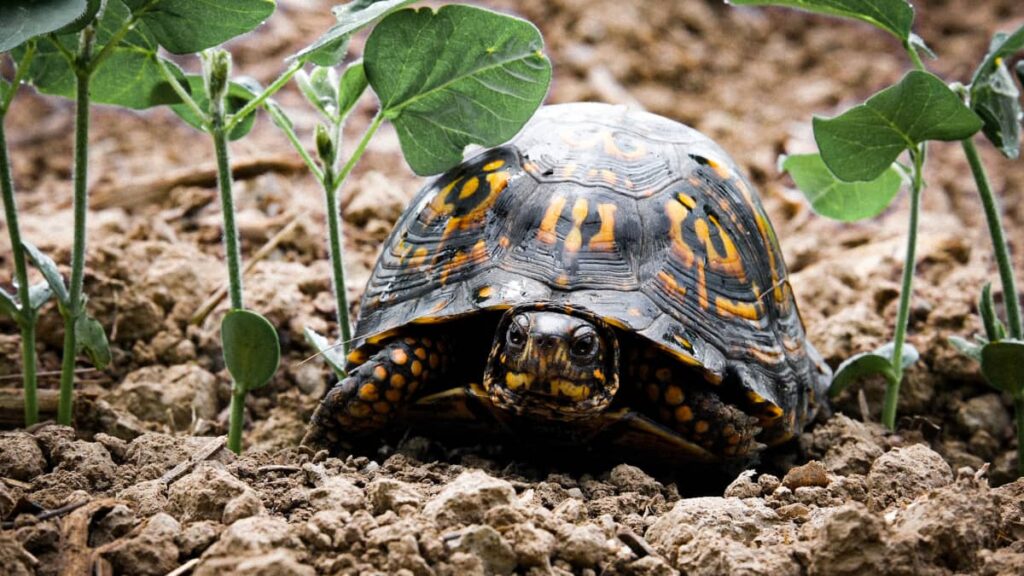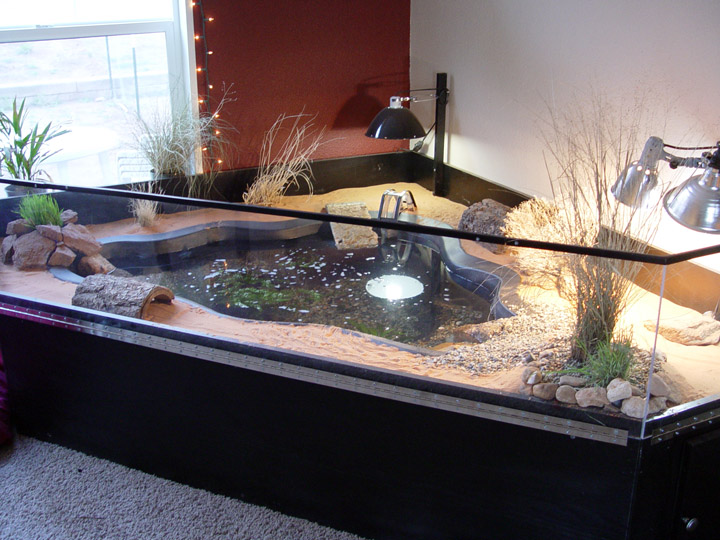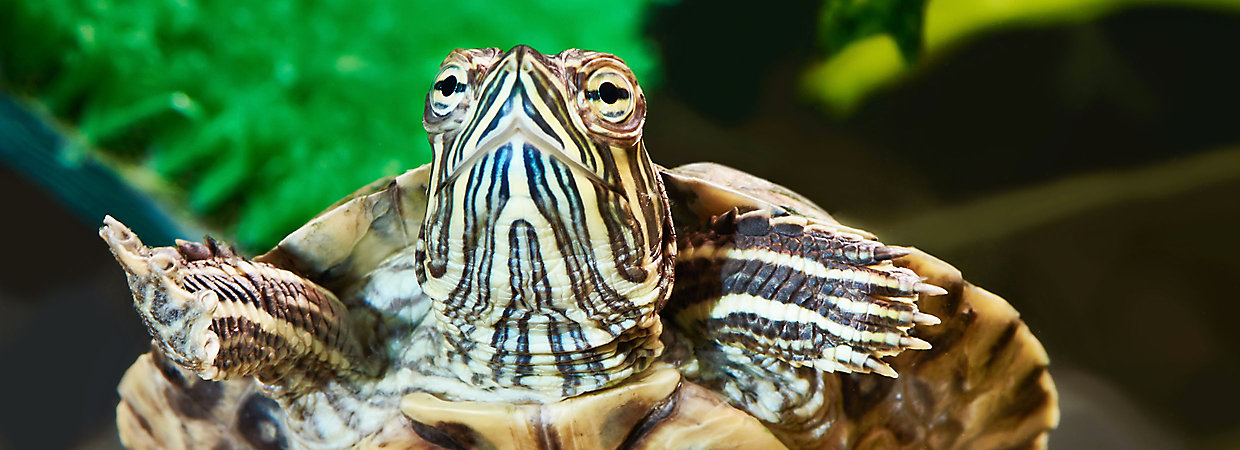So, you’ve decided to bring home a bundle of joy in the form of a baby turtle, but now you’re faced with the challenge of keeping its enclosure clean and odor-free. Well, lucky for you, we have just the solution: the “Maintaining Clean and Odor-Free Indoor Turtle Enclosures for Baby Turtles” product. Designed specifically for the needs of these tiny reptiles, this product ensures a clean and healthy environment for your new shelled friend. Say goodbye to unpleasant odors and hello to a happy and thriving turtle!
Choosing the right enclosure
When it comes to selecting the right enclosure for your baby turtle, there are a few important factors to consider. First and foremost, you need to think about the size of the enclosure. Baby turtles require ample space to swim, explore, and bask. As a general rule, the enclosure should be at least four times the length of your turtle’s shell and twice the width. This will provide enough room for your turtle to move around comfortably.
Next, you’ll want to think about the material of the enclosure. There are several options to choose from, including glass, plastic, and acrylic. Glass enclosures are sturdy and easy to clean, but they can be heavy and prone to cracking. Plastic enclosures are lightweight and affordable, but they may scratch easily. Acrylic enclosures offer the best of both worlds, being lightweight and durable, but they can be more expensive.
Lastly, consider the lighting and heating requirements of your baby turtle. Turtles need access to both UVA and UVB light for proper growth and health. A UVB light source will help your turtle metabolize calcium and prevent conditions like metabolic bone disease. A basking light will provide a warm spot for your turtle to regulate its body temperature. Make sure to provide a suitable setup with proper light fixtures and timers to meet your turtle’s needs.
Proper substrate selection
The substrate you choose for your turtle’s enclosure is crucial for maintaining a clean and healthy environment. There are several options available, each with its own pros and cons. One option is to have a bare-bottom enclosure, which makes cleaning easier but may not provide a naturalistic feel for your turtle. Another option is to use aquarium gravel or sand, which can provide a more aesthetically pleasing setup but may require more frequent cleaning. Lastly, you can opt for artificial turf or reptile carpet, which can be easily cleaned and provide a comfortable surface for your turtle to walk and rest on.
When selecting a substrate, it’s important to consider your turtle’s safety. Avoid substrates that can be ingested and may cause impaction, such as small stones or wood chips. Additionally, be sure to choose a substrate that doesn’t retain excessive moisture, as this can lead to bacterial growth and a foul smell in the enclosure.
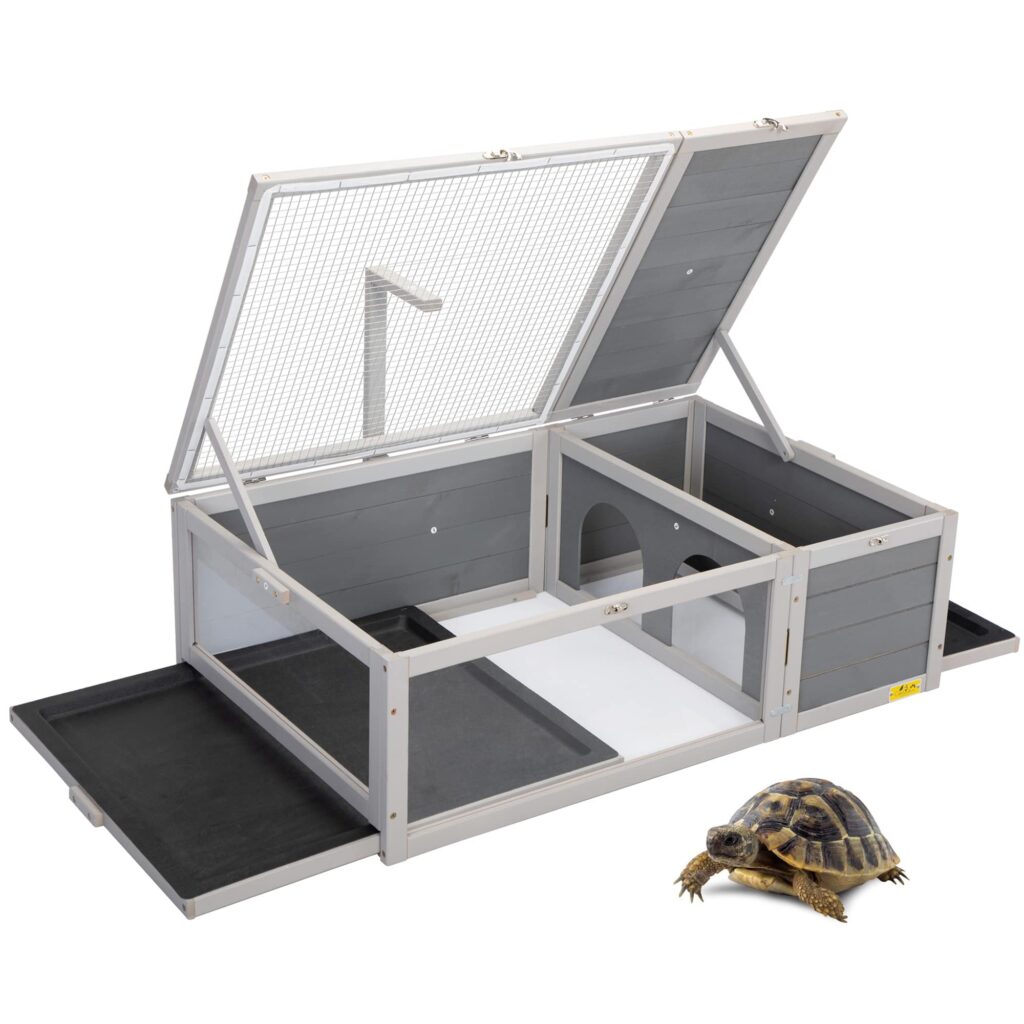
Establishing a regular cleaning routine
To keep your baby turtle’s enclosure clean and odor-free, it’s essential to establish a regular cleaning routine. This will help prevent the buildup of waste, bacteria, and algae, ensuring a healthy environment for your turtle.
Start by performing daily spot cleanings. This involves removing any visible waste from the enclosure, such as uneaten food or feces. Use a net or scoop to remove waste from the water, and spot clean any soiled areas on the substrate. Regular spot cleanings will help maintain a cleaner and healthier enclosure for your turtle.
In addition to daily spot cleanings, you should also perform weekly partial water changes. This involves removing a portion of the water in the enclosure and replacing it with clean, conditioned water. Aiming to replace approximately 20-30% of the water each week will help remove impurities and maintain water quality.
Lastly, it’s important to perform a monthly deep cleaning. This involves completely emptying the enclosure, removing all the substrate and decorations, and thoroughly cleaning the enclosure with a reptile-safe disinfectant. Rinse everything thoroughly and allow it to dry completely before setting up the enclosure again. This deep cleaning process will help to remove any accumulated waste and bacteria that may be present.
Maintaining proper water parameters
Water quality is of utmost importance when it comes to maintaining a clean and healthy turtle enclosure. Proper water parameters will ensure the well-being of your baby turtle.
One key parameter to monitor is the water temperature. Baby turtles need a water temperature of around 75-80 degrees Fahrenheit to thrive. Investing in a reliable water heater and thermometer will help you maintain a stable and suitable temperature for your turtle.
Another important parameter to consider is the pH level of the water. Ideally, the pH should be maintained between 6.5 and 8.5, with 7.0 being neutral. Regularly test the water using a freshwater aquarium test kit to ensure the pH remains within the appropriate range.
Proper water filtration and aeration are also essential for a healthy turtle enclosure. The filter system you choose should be capable of handling the volume of water in your enclosure, as well as effectively removing waste and maintaining water quality. Additionally, providing adequate aeration will ensure sufficient oxygen levels in the water, creating a habitable environment for your turtle.
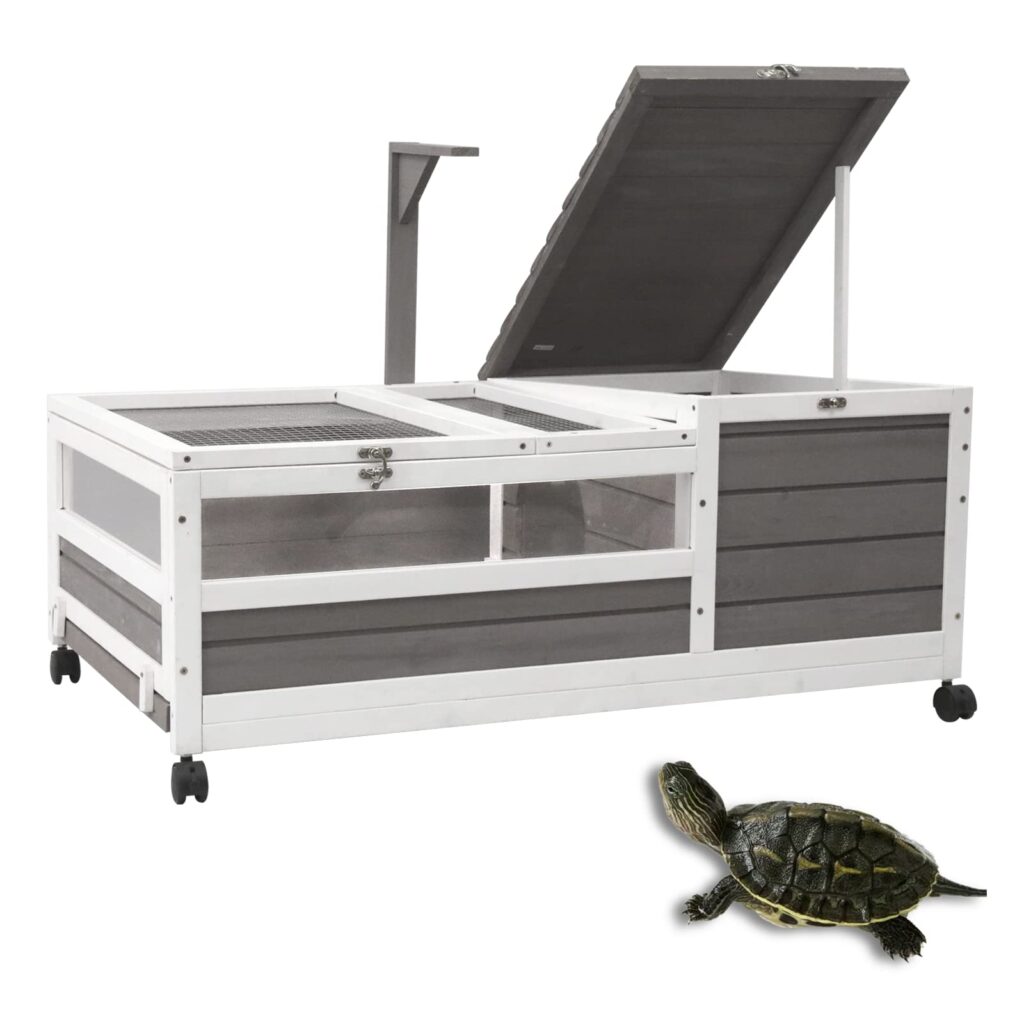
Providing adequate filtration
Choosing the right filter system for your turtle enclosure is crucial to maintaining clean and healthy water conditions. There are several types of filter systems to consider, including canister filters, internal filters, and sponge filters.
Canister filters are generally the most efficient and powerful option for larger enclosures. They provide excellent mechanical, chemical, and biological filtration, keeping the water clean and clear. Internal filters are compact and easy to install, making them a suitable choice for smaller enclosures. They offer effective mechanical and biological filtration. Sponge filters are air-driven filters that provide biological and mechanical filtration. They are gentle on baby turtles and are often used in smaller setups.
When choosing a filter for your enclosure, consider the size and volume of water, as well as the flow rate and filtration capabilities of the filter. It’s important to choose a filter that can handle the waste load of your turtle and maintain proper water parameters.
Avoiding overfeeding and waste accumulation
Overfeeding your baby turtle can lead to excessive waste production and poor water quality. To avoid this, establish a feeding schedule and practice portion control.
It’s recommended to feed your baby turtle once a day, offering a variety of appropriate foods such as commercial turtle pellets, live or frozen insects, and leafy greens. Consult your veterinarian or do research on the specific dietary requirements of your turtle’s species to ensure a balanced and nutritious diet.
When feeding, provide only as much food as your turtle can consume in a few minutes. Any uneaten food should be promptly removed from the enclosure to avoid waste accumulation. Uneaten food can quickly decompose, leading to foul odors and bacterial growth. Additionally, remove any uneaten vegetation or plant matter to prevent decay in the enclosure.
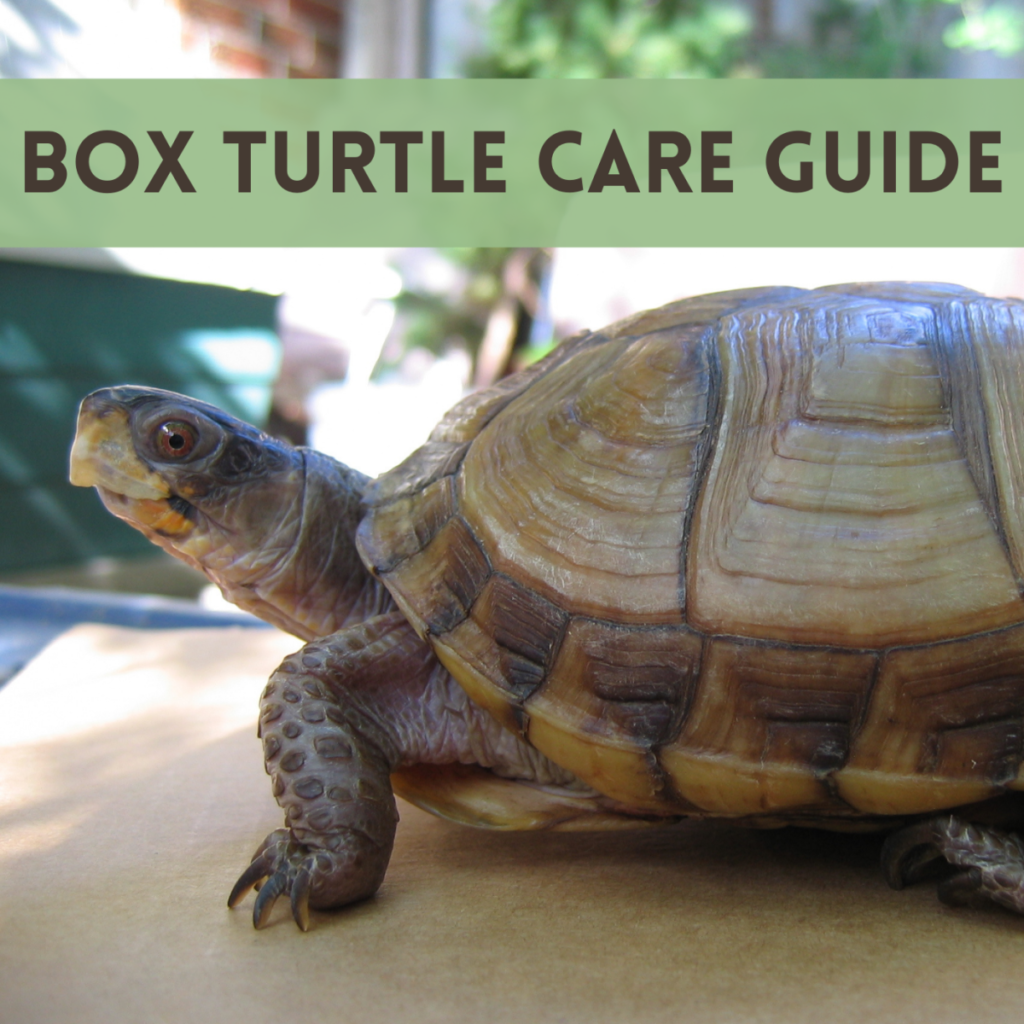
Preventing algae growth
Algae growth is a common issue in turtle enclosures, as turtles produce waste that can contribute to its growth. However, by taking a few preventive measures, you can minimize the occurrence of algae and maintain a clean and visually appealing environment.
One effective way to control algae growth is to limit the duration of lighting in the enclosure. Algae thrive in the presence of light, so it’s important to provide a day-night cycle that mimics the turtle’s natural habitat. Use a timer to ensure that the lights are on for an appropriate period, typically around 10-12 hours a day.
Maintaining a balanced ecosystem can also help prevent algae growth. Introduce live plants to the enclosure, as they can absorb excess nutrients that algae feed on. Additionally, consider adding algae-eating species, like certain snails or shrimps, that can help control or consume the algae.
If algae growth becomes a persistent issue, you can use algae inhibitors or cleaners specifically formulated for reptile enclosures. Always follow the instructions provided by the manufacturer and take precautions to protect the health and safety of your turtle.
Preventing and controlling odor
A clean and odor-free turtle enclosure is not only more pleasant for you but also essential for the health and well-being of your turtle. By following proper cleaning and waste management practices, you can effectively prevent and control odor.
Regular partial water changes are crucial in maintaining water quality and reducing odor. Fresh, clean water dilutes the concentration of waste products and helps keep the enclosure smelling fresh. Additionally, ensure that water conditioners and dechlorinators are used to neutralize chlorine and other harmful chemicals that may be present in tap water.
Proper waste management is equally important. Promptly remove any visible waste, including uneaten food, feces, and shed skin, during daily spot cleanings. By removing waste regularly, you prevent it from decomposing and releasing foul odors into the enclosure. Dispose of waste properly, following local regulations and guidelines for waste disposal.
To further combat odor, you can use odor-neutralizing products specifically designed for reptile enclosures. These products can help eliminate or reduce the smell of waste and help keep the environment fresh and inviting for both you and your turtle. Again, follow the instructions provided by the manufacturer and ensure the products are safe for your turtle’s species.
Maintaining proper humidity levels
Proper humidity levels are essential for the health and well-being of baby turtles. Maintaining adequate humidity will help prevent respiratory problems and promote healthy shell growth.
The specific humidity requirements for baby turtles can vary depending on their species. Research the specific requirements for your turtle’s species to ensure the optimal humidity range is maintained. Generally, a humidity level of around 50-70% is suitable for most baby turtles.
To help maintain proper humidity levels, you can use misting or humidifiers. Misting the enclosure with clean, dechlorinated water several times a day can help increase humidity levels. Alternatively, you can use a humidifier designed for reptile enclosures. Placing a shallow dish of water in the enclosure can also help naturally increase humidity levels.
It’s important to monitor humidity levels regularly using a hygrometer. Adjust misting or humidifier settings accordingly to maintain the appropriate humidity range. Strike a balance and avoid excessive humidity, as this can promote bacterial and fungal growth.
Ensuring regular health check-ups
Regular health check-ups are essential to ensure the overall well-being of your baby turtle. By monitoring your turtle’s health and addressing any issues promptly, you can prevent more serious health problems from developing.
Be vigilant for signs of illness or stress in your baby turtle. Pay attention to changes in appetite, behavior, shell appearance, and overall activity level. Any unusual or concerning symptoms should be promptly addressed.
Schedule regular vet visits and examinations for your turtle. A reptile veterinarian can perform a thorough examination, including checking for shell abnormalities, respiratory issues, or parasites. They can also provide guidance on proper nutrition, habitat maintenance, and any specific health concerns related to your turtle’s species.
In the event that you introduce a new turtle to your enclosure, it’s important to implement proper quarantine procedures. Quarantining new turtles for a minimum of 30 days allows you to observe them for any signs of illness or disease before introducing them to your existing turtles. This helps prevent the spread of infectious diseases and ensures the health and safety of your turtles.
By following these guidelines and implementing proper care practices, you can maintain a clean, odor-free, and healthy environment for your baby turtles. Remember, consistency and diligence are key to ensuring the well-being of your turtles and providing them with a comfortable and thriving habitat.
